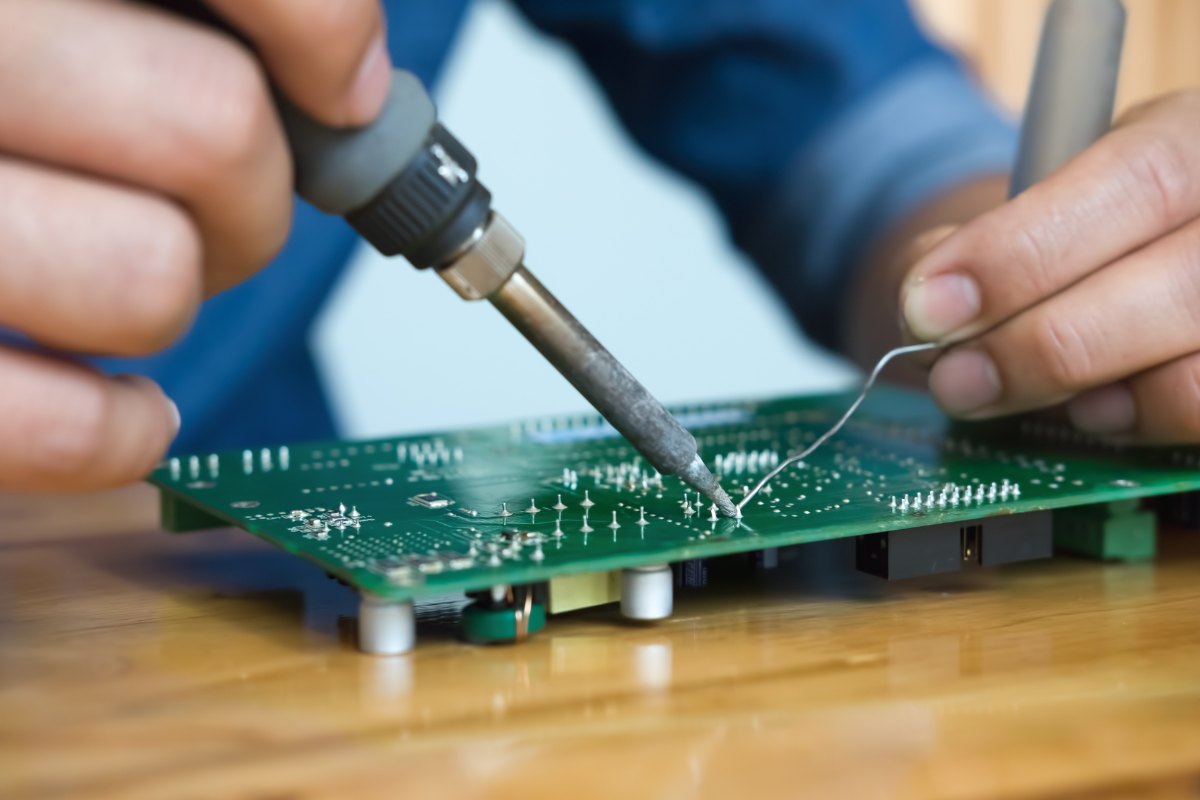회로 기판 또는 인쇄 회로 기판(PCB)은 거의 모든 전자 기기의 기능에 필수적인 요소입니다. 회로 기판은 전자 부품을 컴팩트하고 효율적인 방식으로 배열하기 위한 토대를 제공합니다. 이 문서에서는 회로 기판의 작동 원리, 구조 및 작동 중에 발생할 수 있는 주요 결함의 원인을 살펴봅니다.
회로 기판의 작동 원리
회로 기판의 작동 원리는 전도성 동박 층을 분리하기 위해 절연 기판 재료를 사용하는 것을 기반으로 합니다. 이러한 배열을 통해 전류가 미리 정해진 경로를 따라 흐르도록 하여 다양한 구성 요소가 증폭, 감쇠, 변조, 복조 및 코딩과 같은 기능을 수행할 수 있도록 합니다.
회로 기판의 구조
회로 기판은 주로 패드, 스루홀, 장착 구멍, 전선, 부품, 커넥터, 충전재 및 전기 경계로 구성됩니다. 레이어 구조에 따른 일반적인 회로 기판 유형에는 단층 기판(단일 레이어 PCB), 이중 레이어 기판(이중 레이어 PCB), 다층 기판(다층 PCB)이 있습니다.
회로 기판의 구성 요소
회로 기판의 각 구성 요소는 특정 기능을 수행합니다:
- 납땜 플레이트: 구성 요소 핀 납땜에 사용되는 금속 구멍입니다.
- 관통 구멍: 금속 또는 비금속일 수 있습니다. 금속 관통 홀은 각 레이어 사이에 컴포넌트 핀을 연결하는 데 사용됩니다.
- 장착 구멍: 회로 기판을 고정하는 데 사용됩니다.
- 지휘자: 구성 요소의 핀을 연결하는 데 사용되는 전기 네트워크 구리 필름입니다.
- 커넥터: 회로 기판의 구성 요소를 연결하는 데 사용됩니다.
- 채우기: 접지 네트워크에 증착된 구리로, 임피던스를 효과적으로 줄일 수 있습니다.
- 전기 경계: 회로 기판의 크기를 결정하는 데 사용됩니다. 회로 기판의 모든 구성 요소는 이 경계를 초과해서는 안 됩니다.
PCB 용접 결함의 원인
PCB의 용접 결함은 여러 가지 요인으로 인해 발생할 수 있습니다. 주요 원인 중 하나는 회로 기판 구멍의 납땜성입니다. 납땜성이 좋지 않으면 가상 용접 결함이 발생하여 회로 구성 요소의 파라미터에 영향을 미칠 수 있습니다. 이로 인해 다층 보드 구성 요소와 내부 레이어 전선 사이의 전도가 불안정해져 전체 회로가 고장날 수 있습니다.
납땜성에 영향을 미치는 요인
인쇄 회로 기판의 납땜성에 영향을 미치는 주요 요인은 다음과 같습니다:
땜납의 구성 및 특성
땜납은 용접의 화학 공정에서 필수적인 부분입니다. 플럭스를 포함하는 화학 물질로 구성됩니다. 일반적인 저융점 공융 금속은 Sn-Pb입니다. 불순물이 플럭스에 용해되지 않도록 불순물 함량을 제어해야 합니다. 플럭스의 기능은 열을 전달하고 녹을 제거하여 솔더가 솔더 플레이트 회로의 표면을 적시는 것을 돕는 것입니다. 일반적으로 백색 로진과 이소프로필 알코올 용매가 사용됩니다.
용접 온도 및 표면 청결도
온도가 너무 높으면 이때 땜납의 확산 속도가 매우 빨라집니다. 이로 인해 회로 기판과 땜납 표면이 빠르게 산화되어 용접 결함이 발생할 수 있습니다. 회로 기판 표면의 오염도 용접성에 영향을 미쳐 결함을 일으킬 수 있습니다. 이러한 결함에는 주석 구슬, 주석 볼, 개방 회로 및 광택이 포함됩니다.
회로 기판의 구조와 작동 원리, 용접 결함을 유발할 수 있는 요인을 이해하는 것은 전자 기기의 제조 및 유지 보수에 있어 매우 중요합니다. 이러한 문제를 해결함으로써 기기의 안정적이고 효율적인 작동을 보장할 수 있습니다.
